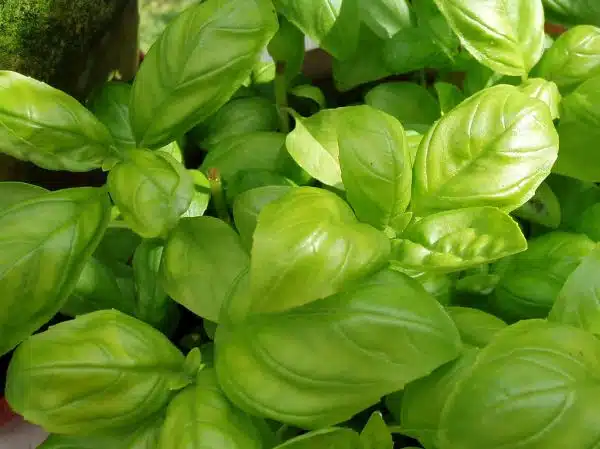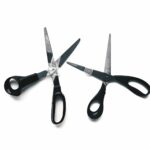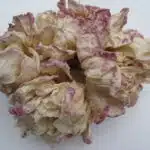Basil is a popular herb among gardeners and culinary enthusiasts alike. It is known for its fresh fragrance and versatile use in various dishes, including salads, pasta, and soups. However, to ensure that basil plants remain healthy and productive, pruning is necessary. In this article, we will discuss how to prune basil from top to bottom.
Pruning is the process of cutting back certain parts of a plant to promote growth and improve overall health. Basil plants require regular pruning to prevent them from becoming too leggy or bushy, which can affect their flavor and productivity. Pruning also helps to remove any dead or diseased parts of the plant, which can spread pests and disease if left unattended. By following the proper techniques for pruning basil plants, you can ensure that your harvest will be bountiful and full of flavor.
Understanding The Importance Of Pruning For Basil Plants
If you’ve decided to grow basil in your garden or indoor space, then you’re in for a treat. Basil is one of the most versatile herbs around and can be used in a variety of dishes, making it an essential ingredient in any kitchen. However, to ensure that your basil plant grows to its full potential, it’s important to understand the benefits of pruning.
Pruning is the process of removing unwanted or dead parts of a plant to stimulate new growth. It’s an essential part of maintaining healthy plants, and basil is no exception. There are two main types of pruning techniques: pinching and cutting. Pinching involves removing the topmost leaves from the stem with your fingers, while cutting involves using sharp pruning shears to cut back larger stems.
There are several benefits to pruning basil plants regularly. Firstly, it encourages bushier growth and prevents leggy stems from forming. This means that you’ll have a more compact plant with more leaves available for harvesting. Secondly, pruning helps to prevent disease by allowing better air circulation around the plant and reducing moisture buildup on the leaves. Lastly, regular pruning ensures that your plants stay healthy and produce fresh growth throughout the growing season. Now that we understand the importance of pruning let’s move on to preparing our tools for this task.
Preparing Your Pruning Tools
Before pruning your basil plant, it is important to prepare your tools properly. Cleaning tools before and after use is an essential step in maintaining their longevity and effectiveness. Use a mixture of warm water and soap to clean the blades of your pruning shears thoroughly. Rinse the blades with clean water and dry them with a towel. This will prevent any bacteria from spreading between plants.
Maintaining your tools is equally important for successful pruning. After cleaning, sharpen the blades of your pruning shears using a sharpening stone or file. A dull blade can cause damage to the plant and make it more susceptible to disease. Additionally, be sure to lubricate the pivot point of the shears regularly with oil to keep them moving smoothly.
By properly cleaning and maintaining your pruning tools, you can ensure that they are ready for use whenever you need them. The next step in preparing for pruning basil is identifying the parts of the plant that need attention.
Identifying The Parts Of A Basil Plant To Prune
When it comes to pruning basil, it is crucial to identify the parts of the plant that need attention. The most important areas are the top, middle, and bottom portions of the plant. Each section requires different techniques to prune effectively.
Pruning techniques for the top portion of the basil plant involve removing the central stem’s tip. This process encourages lateral growth and bushier foliage development. To achieve this, use sharp scissors or pruning shears to cut off about ¼ inch above a leaf node. Be sure to make a clean cut at an angle that is parallel to the node.
Maintenance tips for pruning the middle part of a basil plant involve cutting back any overgrown stems or branches that obstruct lower foliage from receiving adequate sunlight. To do this, locate any tall or leggy stems and trim them down by about half their length. This technique will allow sunlight to reach lower leaves and promote healthy growth.
- A well-maintained basil plant can provide an abundance of fresh leaves throughout its growing season.
- Pruning encourages new growth and helps prevent disease and insect infestation.
- Regularly harvesting basil leaves also helps keep plants healthy by preventing overcrowding.
With these tips in mind, it is essential to know when it’s best to prune your basil plant. Choosing the right time can significantly affect how well your plant responds to pruning techniques. Read on for more information on when to prune your basil plant effectively.
Choosing The Right Time To Prune
Pruning basil is an important step in maintaining a healthy and productive garden. The timing of pruning should be based on the weather conditions and the likelihood of frost; pruning should typically take place in early spring or late winter, before the basil begins to grow rapidly. Weather conditions should be considered when pruning; if a frost is expected, pruning should be delayed until it has passed. Pruning frequency should be determined by the size of the plant; small basil plants may require pruning every few weeks, while larger plants may only need to be pruned once or twice a year. Furthermore, it is important to prune from the top of the plant first, allowing for the lower leaves to receive adequate sunlight and airflow. Finally, it is important to remove any dead or dying leaves from the plant in order to maintain its overall health.
Timing Of Pruning
When it comes to pruning basil, timing is crucial to ensure optimal plant growth and yield. Pruning frequency will vary depending on the specific variety of basil and growing conditions, but generally, pruning should be done regularly throughout the growing season. Regular trimming helps to encourage bushier growth and prevent leggy stems, which can lead to decreased herb production.
The effects of pruning on plant growth are significant. Cutting off the top leaves stimulates new growth at lower nodes, resulting in a fuller and more productive plant. Pruning also helps to improve airflow around the plant, reducing the risk of disease and pest infestations. However, it’s important not to over-prune, as this can stunt the plant’s growth and lead to reduced yields.
The best time to prune basil is when the plant has developed at least six sets of leaves. This ensures that there are enough leaves remaining for photosynthesis while allowing for new growth to emerge from lower nodes. It’s also recommended to avoid pruning during periods of stress like drought or extreme heat, as this can further weaken the plant. With proper timing and technique, regular pruning can help you grow a thriving basil crop with abundant yields of fragrant and flavorful herbs.
Weather Conditions
When it comes to gardening, timing is everything. The same is true for pruning basil plants. While the plant’s growth stage is an important factor to consider when planning a pruning schedule, weather conditions also play a crucial role in determining the right time to prune. One of the most significant weather factors that affect basil’s growth and health is humidity.
Humidity can have a profound effect on basil plants, especially in areas with high moisture levels. High humidity promotes fungal diseases that can weaken and even kill the plant. It’s essential to be mindful of the relative humidity levels in your area before pruning your basil plants. If you live in a humid climate, it’s best to avoid pruning during periods of high humidity to prevent further stress on your plants.
Another critical weather factor that plays a vital role in basil plant growth and health is sunlight. Basil requires adequate sunlight to thrive and produce healthy foliage. When deciding when to prune your basil plants, it’s essential to consider their exposure to sunlight. Pruning during periods of low light or cloudy days can lead to stunted growth and reduced yields. It’s best to wait for sunny days when your plant has fully absorbed enough light before trimming them back.
In conclusion, choosing the right time to prune your basil plants involves more than just considering their growth stage; it also entails taking into account various weather factors such as humidity levels and sunlight exposure. By being mindful of these environmental conditions, you can ensure optimal plant health and yield while preventing stress on your plants caused by unfavorable weather conditions.
Pruning Frequency
When it comes to pruning basil plants, knowing the right time and frequency can significantly affect their growth and yield. Besides considering weather factors such as humidity levels and sunlight exposure, pruning frequency is another critical factor to consider. Pruning too little or too often can lead to unfavorable outcomes for your plant.
Pruning frequency depends on the basil plant’s growth stage and the desired outcome. For instance, if you want bushier plants with more foliage, it’s best to prune them regularly. However, if you want to promote flowering and seed production, it’s best to limit pruning. In terms of tools, using sharp pruning shears is essential for a clean cut that promotes healing.
When it comes to pruning techniques, there are two main approaches: selective pruning or pinching off the top of the plant. Selective pruning involves removing specific branches or leaves from the plant to shape its growth. Pinching off the top of the plant involves removing the top part of each stem to encourage branching out and bushier growth. Whichever technique you choose, remember not to over-prune your basil plants as this can lead to stress and reduced yields.
How To Prune The Top Leaves Of A Basil Plant
According to a recent survey conducted by the National Gardening Association, over 35% of American households grow their own herbs, with basil being one of the most popular choices. Pruning is an essential technique for maintaining the health and productivity of basil plants. Proper pruning techniques can also enhance the flavor and aroma of the leaves.
Timing considerations are crucial when it comes to pruning basil plants. It is best to start pruning when the plant has at least six sets of leaves. This ensures that there is enough foliage for photosynthesis and growth. The ideal time to prune is in the morning after dew has evaporated, but before high temperatures set in for the day.
To prune the top leaves of a basil plant, use sharp scissors or shears to snip off the top two to four sets of leaves. Be sure not to cut too close to the stem as this may damage new growth. Prune regularly throughout the growing season, but avoid removing more than one-third of the plant at any given time. This will encourage branching and promote healthy growth.
When considering how to prune a basil plant, timing and technique are key factors. By following these simple guidelines and incorporating regular pruning into your herb garden maintenance routine, you can enjoy a bountiful harvest of flavorful and aromatic basil all summer long. In our next section, we will discuss how to prune the stem of a basil plant for optimal results.
How To Prune The Stem Of A Basil Plant
After pruning the top leaves of a basil plant, the next step is to prune its stem. Pruning techniques vary depending on the goal you want to achieve. If you want your basil plant to grow bushier, pinch off the top of each stem just above a set of leaves. This will encourage new growth from the base of the plant, resulting in a fuller appearance.
Another way to prune a basil plant is by removing entire stems that have become woody or leggy. This will prevent your plant from becoming too tall and lanky, which can make it difficult for lower leaves to receive adequate sunlight and airflow. To do this, cut back the entire stem just above a set of healthy leaves or all the way down to the base of the plant if necessary.
Maintenance tips for pruning basil plants include regularly inspecting your plant for signs of disease or pests and using clean, sharp tools when pruning. It’s also important to avoid over-pruning as this can weaken your plant and reduce its overall yield. By following these tips and techniques, you can ensure that your basil plant remains healthy and productive throughout its growing season.
To continue pruning your basil plant effectively, it’s important to learn how to prune its branches properly. By following specific techniques and guidelines, you can help promote healthy growth and prevent issues such as overcrowding or disease. Here are some tips on how to properly prune branches of a basil plant: – Use clean and sharp pruning shears to make clean cuts without damaging the plant.
How To Prune The Branches Of A Basil Plant
As the old adage goes, “prune a little and often.” This is especially true when it comes to basil plants, as pruning techniques can greatly affect their growth and flavor. Common mistakes include cutting too much at once or leaving too many leaves on the plant, which can lead to stunted growth or a bitter taste.
When pruning the branches of a basil plant, it’s important to start from the top and work your way down. Begin by pinching off any flowers that have bloomed, as these can divert energy away from leaf production. Next, identify any stems that are growing too tall or wide and trim them back to encourage bushier growth.
Another technique for pruning basil is to remove the top two sets of leaves on each stem. This will encourage new growth from the nodes just below where you made the cut. Be sure not to remove more than 1/3 of the plant at once, as this can shock it and cause damage. With these simple pruning techniques, you’ll be able to maintain a healthy and flavorful basil plant in your own garden.
Moving on to how to prune the bottom leaves of a basil plant, it’s important to note that these should only be removed if they are yellowing or damaged. Otherwise, they are still contributing to photosynthesis and providing nutrients to the rest of the plant. Use sharp scissors or pruning shears to make clean cuts at an angle just above where the leaf meets the stem. By removing only what is necessary and following proper pruning techniques, you’ll be able to enjoy fresh basil all season long.
How To Prune The Bottom Leaves Of A Basil Plant
After pruning the branches of a basil plant, it is also important to consider the bottom leaves. Pruning the bottom leaves of a basil plant is essential for its growth and health. Removing these leaves allows more sunlight and air to reach the top leaves, which helps in promoting better growth.
Benefits of pruning basil include improving its overall appearance, increasing yield, and extending the life of the plant. It also helps in preventing diseases and pests from forming on the lower part of the plant. However, there are some common mistakes that one should avoid when pruning basil plants. Cutting off too many leaves at once can stunt its growth or cause it to die. Additionally, using dull or dirty tools can also harm the plant.
When pruning the bottom leaves of a basil plant, it is best to start with those that are yellowing or damaged. Cut them off at their base using sharp and clean scissors or shears. It is recommended to remove only up to ⅓ of the total foliage at once, allowing enough time for new growth to sprout before pruning again. Remember that over-pruning can be detrimental to your basil’s health.
Transition: Now that we have learned about how important it is to prune both branches and bottom leaves of a basil plant let us now proceed into learning how to properly prune for shape and size.
How To Prune Basil For Shape And Size
Pruning techniques are an essential aspect of maintaining healthy basil plants. If your basil is getting too large or has many overgrown branches, it’s time to prune it. Pruning ensures that your plant stays healthy and produces plenty of leaves for cooking.
When pruning basil, start from the top and work your way down. This helps you see the overall shape of the plant as you make each cut. Begin by removing any flowers or buds, as these can sap energy from the plant and lead to fewer leaves. Next, trim off any branches that are growing towards the center of the plant or crossing over each other.
To maintain a healthy size and shape for your basil, follow these simple steps:
- Use clean, sharp pruning shears to make precise cuts.
- Make cuts at a 45-degree angle just above a leaf node.
- Don’t remove more than one-third of the plant at once.
Pruning may seem daunting at first, but with practice, you’ll become more confident in your abilities. Remember to take your time and be mindful as you work on your basil plant. In the next section, we’ll discuss tips for pruning basil without damaging the plant.
Tips For Pruning Basil Without Damaging The Plant
- Pruning basil is a task best done with the right tools, such as clean and sharp shears.
- Pruning should begin at the top of the plant and work downwards, removing any yellowing or wilted leaves.
- Take care to avoid cutting off any stems that are actively growing.
- Removing spent flower heads can encourage new growth and help keep the plant from becoming unruly.
- Pruning should be done regularly to ensure the basil remains healthy and productive.
- Pruning should be done at least once a month and more often if the plant is growing vigorously.
Pruning Tools
Pruning basil is an essential technique for maintaining a healthy and productive plant. Proper pruning techniques can help you to prevent the plant from becoming too woody or leggy, while also encouraging it to produce more leaves and stems. However, using the right tools is crucial when it comes to pruning basil without damaging the plant.
One of the most important maintenance tips for pruning basil is to use clean and sharp pruning tools. Dull or dirty tools can damage the plant and make it more vulnerable to disease or pests. It’s best to use sharp scissors or pruning shears that have been sterilized with rubbing alcohol before making any cuts on your basil plant.
When pruning basil from top to bottom, start by removing any yellowed or damaged leaves at the bottom of the plant. Then, work your way up each stem, pinching off any smaller leaves that are growing too close together. Be sure not to remove more than one-third of the plant at a time, as this can stress the basil and reduce its growth rate. By following these simple techniques for pruning basil, you can enjoy a healthier and more productive plant in no time!
Pruning Steps
Pruning basil is a crucial aspect of maintaining a healthy and productive plant. Proper pruning techniques not only prevent the plant from becoming too woody or leggy but also encourage it to produce more leaves and stems. Pruning helps maintain the growth rate of your basil by removing any damaged or yellowed leaves, stimulating new growth, and maintaining the shape of the plant.
To ensure successful pruning, it’s essential to follow specific steps that will help you achieve your desired outcome. The first step in pruning basil is to remove any lower yellowed or damaged leaves. Next, work your way up each stem, pinching off any smaller leaves that are growing too close together. Be careful not to remove more than one-third of the plant at a time as this can stress the basil and reduce its growth rate.
Maintaining basil growth requires proper pruning techniques such as using clean and sharp tools when cutting back your plant. Remember to sterilize your scissors or pruning shears with rubbing alcohol before making any cuts on your basil plant to prevent damage and disease. By following these simple steps for pruning basil, you can enjoy a healthier and more productive plant while keeping its shape intact.
Pruning Frequency
Pruning basil is a vital aspect of promoting healthy growth and increasing the yield of your plant. However, it’s essential to consider the frequency of pruning to ensure that you’re not overdoing it or harming the plant in any way. Pruning frequency depends on several factors, including how mature the plant is, its nutrient requirements, and its growth rate.
Generally speaking, it’s recommended to prune basil every two to three weeks during the growing season. This allows you to remove any damaged or yellowed leaves and stimulate new growth while keeping the plant’s shape intact. It’s also important to avoid pruning too much at once, which can shock the plant and reduce its overall productivity.
In addition to regular pruning, it’s essential to monitor your basil plant’s nutrient requirements and adjust your pruning frequency accordingly. If you notice that your basil is growing too quickly or becoming too leggy, you may need to prune more often than every two to three weeks. Conversely, if your plant seems stunted or struggling for nutrients, reducing pruning frequency may be necessary until it recovers. By following these techniques for proper pruning frequency, you can enjoy a healthier and more productive basil plant all year round.
Common Mistakes To Avoid While Pruning Basil
What are some common mistakes to avoid while pruning basil? First and foremost, do not cut the stem too close to the main branch. This can damage the plant and prevent it from growing properly. Instead, make sure to leave a small piece of stem above the main branch when cutting.
Another common mistake is over-pruning. While it may be tempting to remove all of the leaves and branches at once, this can actually harm the plant’s growth in the long run. It’s important to only remove what is necessary for healthy growth and to give the plant time to recover before pruning again.
To maximize your basil plant’s growth, there are a few tips you can follow. Always use clean, sharp pruning shears to prevent damage or infection. Additionally, only prune during active growth periods such as spring and summer. Finally, make sure to water and fertilize your plants regularly to keep them healthy and strong.
Transitioning into our next topic, how often should you prune basil plants? It’s important to find a balance between allowing enough space for new growth while also avoiding over-pruning. In the following section, we will discuss the best practices for timing your basil prunings for optimal results.
How Often Should You Prune Basil Plants?
After learning about the common mistakes to avoid while pruning basil, it’s important to understand the benefits of pruning. Pruning encourages bushier growth and prevents leggy plants by removing the top portion of the stem. This also helps to promote airflow and reduce the risk of disease. Additionally, regular pruning can increase yields and improve flavor as it stimulates new growth.
However, there is a fine line between proper pruning and over-pruning. Signs of over-pruning include stunted growth, yellowing leaves, and reduced yields. It’s important to only remove about one-third of the plant at a time and to avoid cutting into woody stems. If you accidentally over-prune your basil, give it some time to recover before attempting any further trimming.
Overall, regular pruning is essential for maintaining healthy basil plants that produce abundant yields with vibrant flavor. By understanding the benefits of pruning and avoiding common mistakes, you can ensure your basil plants thrive in your garden or on your windowsill.
- A well-pruned basil plant not only produces better yields but also looks more attractive.
- Pruning can be a relaxing activity that helps you connect with nature.
- The aroma released from freshly pruned basil leaves can elevate your mood instantly.
- Using fresh pruned basil in recipes adds an authentic touch to your dishes.
Moving forward, let’s take a look at how to use pruned basil leaves in recipes without wasting any part of this versatile herb.
How To Use Pruned Basil Leaves In Recipes
As you prune your basil, the leaves will fall and create an aromatic and beautiful carpet on the ground. Pruning techniques involve removing the top portion of each stem, which encourages new growth to sprout from lower down on the plant. This process will allow your basil to become fuller and more robust, as well as prevent it from becoming too leggy.
Once you have pruned your basil, you can use the leaves in a variety of recipes to infuse them with flavor. One popular way to use pruned basil is by creating infused oils. Simply place fresh basil leaves into a jar filled with olive oil, seal it tightly, and let it sit for a few days. The oil will absorb the flavor of the basil and can be used in dressings or drizzled over pasta dishes.
Storing pruned basil for later use is easy and convenient. You can dry out your freshly pruned leaves by placing them in a single layer on a baking sheet and letting them air dry in a cool, dark place for a few days. Once they are fully dried, store them in an airtight container until ready to use. Alternatively, you can freeze your fresh basil leaves by chopping them up finely, placing them in an ice cube tray filled with water or oil, freezing overnight, and then transferring the cubes to a freezer bag for long-term storage.
Storing Pruned Basil For Later Use
After pruning basil, it is important to properly store the remaining leaves to maximize shelf life. The first step in storing pruned basil is to remove any damaged or wilted leaves. These should be discarded as they can cause the remaining leaves to spoil faster.
Once the damaged leaves have been removed, the remaining basil can be stored in a number of ways. One popular method is to place the stems in a glass of water and cover the leaves with a plastic bag. This keeps the basil fresh and hydrated for up to a week. Another option is to wrap the basil in damp paper towels and store it in a plastic bag in the refrigerator.
To further extend shelf life, some people choose to freeze their pruned basil. This involves chopping or pureeing the leaves and freezing them in an ice cube tray or freezer bag for later use. Frozen basil can last up to six months and retains much of its flavor and aroma when thawed.
Markdown list:
- Remove any damaged or wilted leaves before storing pruned basil.
- Consider storing pruned basil in a glass of water covered with plastic or wrapped in damp paper towels and stored in a plastic bag.
- Freezing chopped or pureed pruned basil can extend shelf life up to six months.
In horticulture, proper storage techniques are crucial for maintaining plant health and maximizing longevity. When it comes to pruning basil, these best practices become even more important as they determine how long you will be able to enjoy your freshly harvested herbs. By following these guidelines for storing pruned basil, you can ensure that your herb garden continues to provide you with delicious ingredients for all your culinary creations.
Transition: Now that we know how to properly store pruned basil, let’s explore some common issues that may arise when caring for your plants after pruning.
Troubleshooting Common Issues With Basil Plants After Pruning
Common issues with basil growth after pruning may arise due to incorrect techniques or excessively aggressive pruning. Over-pruning can lead to the removal of too many leaves, which can cause the plant to struggle with photosynthesis and reduce overall growth. Additionally, improper pruning techniques such as cutting off the main stem rather than just above a leaf node can also inhibit healthy growth.
To prevent over-pruning of basil plants, it is recommended to only remove up to one-third of the plant’s foliage at a time. This allows for enough leaves to remain for photosynthesis while still promoting bushier growth. It is also important to use sharp and clean gardening shears when pruning basil plants to avoid damaging the remaining foliage or spreading disease.
Another way to ensure healthy basil growth after pruning is by providing adequate water and sunlight. Basil plants require consistent moisture but should not be over-watered as this can lead to root rot. They also need at least 6 hours of direct sunlight per day, so placing them in a sunny location or supplementing with grow lights can help promote healthy growth. By following these guidelines, common issues with basil growth after pruning can be avoided, and your basil plants will thrive in no time!
Conclusion
Pruning basil plants is a crucial step in maintaining their health and encouraging growth. It allows for the removal of dead or damaged parts, promotes branching and bushiness, and helps prevent pest infestations. To effectively prune basil, it’s important to have the right tools and understand the various parts of the plant that need attention.
Timing is also key when it comes to pruning basil, as doing it at the wrong time can harm the plant’s growth. By following simple steps such as identifying which leaves to prune, how often to do so, and how to use the pruned leaves in cooking or storing them for later use, one can enjoy a bountiful harvest of fresh basil throughout the growing season. With proper care and attention, your basil plants will thrive and provide you with an abundance of flavorful leaves to enhance your culinary creations.
Image Credits
- “Basil” by amandabhslater (featured)





























